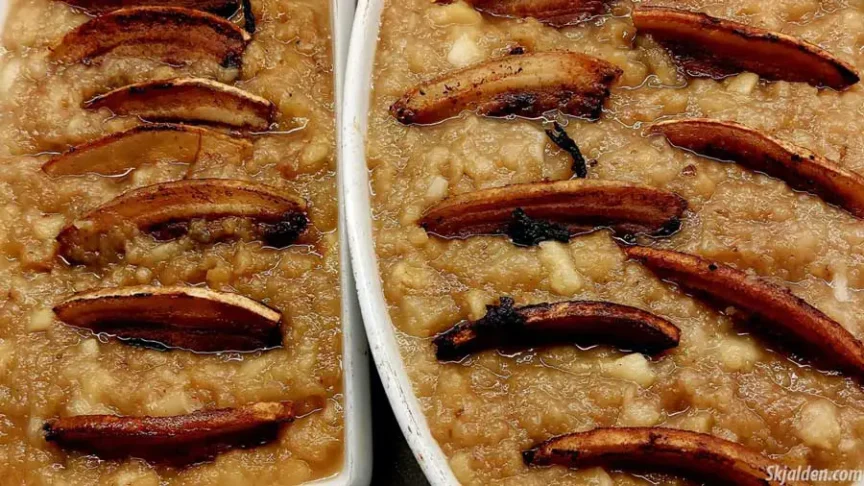Æbleflæsk is a dish echoing the culinary heritage of Denmark and it is a simple yet savory meal that embodies the traditional Danish approach to cooking. This dish, with its unassuming name meaning ‘apple-pork’ in English, is a testament to the ingenuity of Danish cuisine, using readily available local ingredients to create a meal that’s both hearty and flavorful.
The essence of Æbleflæsk lies in its core ingredients: pork belly and apples. The pork, known as ‘flæsk’ in Danish, is either cured or salted, providing a rich, deep flavor. Apples, a staple in Danish farms, add a sweet and tart contrast to the savory pork. This combination, though seemingly straightforward, produces a harmonious blend of flavors that has delighted palates for centuries.
The Evolution of Æbleflæsk
Initially, Æbleflæsk was a practical dish, born out of necessity and the need for sustenance, especially during the harsh winter months. The dish’s roots can be traced back to a time when preserving food was vital for survival, and pork, being a common livestock in Denmark, was often cured or smoked for longevity. Apples, with their natural sweetness and acidity, were one of the few fruits that could be stored throughout the winter, making them an ideal companion to the preserved pork.
As Danish society evolved, so did the dish. What started as a peasant meal transitioned into a culinary favorite across all classes of society. The simplicity of Æbleflæsk, with its minimalistic approach to ingredients and preparation, contradicts its rich and comforting taste, which resonates with the Danish ethos of ‘hygge’ – a concept that emphasizes comfort, contentment, and well-being.
Regional Variations of Æbleflæsk
While the basic components of Æbleflæsk remain constant, regional variations across Denmark add unique twists to this classic dish. In some areas, the dish is made with a sweet apple mash and small bacon cubes, offering a different texture and flavor profile. Others prefer larger, lightly salted slices of pork paired with fried apples and onions, creating a more robust and hearty version.
These regional differences highlight the adaptability of Æbleflæsk. Each version maintains the dish’s core identity while allowing for personalization and adaptation to local tastes and available ingredients. This flexibility has contributed to the dish’s enduring popularity and its place as a staple in Danish cuisine.
In present-day Danish cuisine, Æbleflæsk continues to be a beloved dish, enjoyed in various settings, from family dinners to festive gatherings. Modern variations of the dish often involve frying the pork belly first, followed by the apples, which are then seasoned with spices and sugar, creating a delightful mix of flavors.
The dish’s versatility is evident in how it’s served – it can be enjoyed hot or cold, often accompanied by rugbrød (Danish rye bread), adding a wholesome and rustic element. This combination not only highlights the flavors but also adds a textural contrast that elevates the dish.
During Christmas (Yule), Æbleflæsk is often served alongside other classic Danish Christmas dishes. These might include roast duck, the ever-popular flæskesteg (roast pork), and a variety of sides like red cabbage and caramelized potatoes. The combination of these dishes creates a symphony of flavors that is both comforting and celebratory, embodying the essence of Danish culinary tradition during the holiday season.
